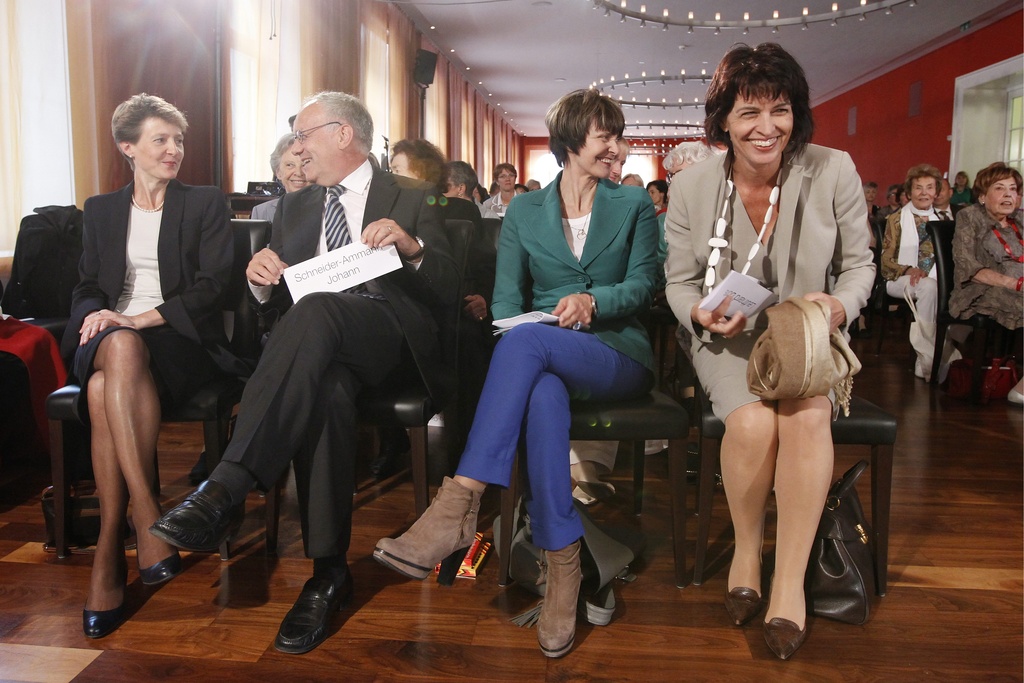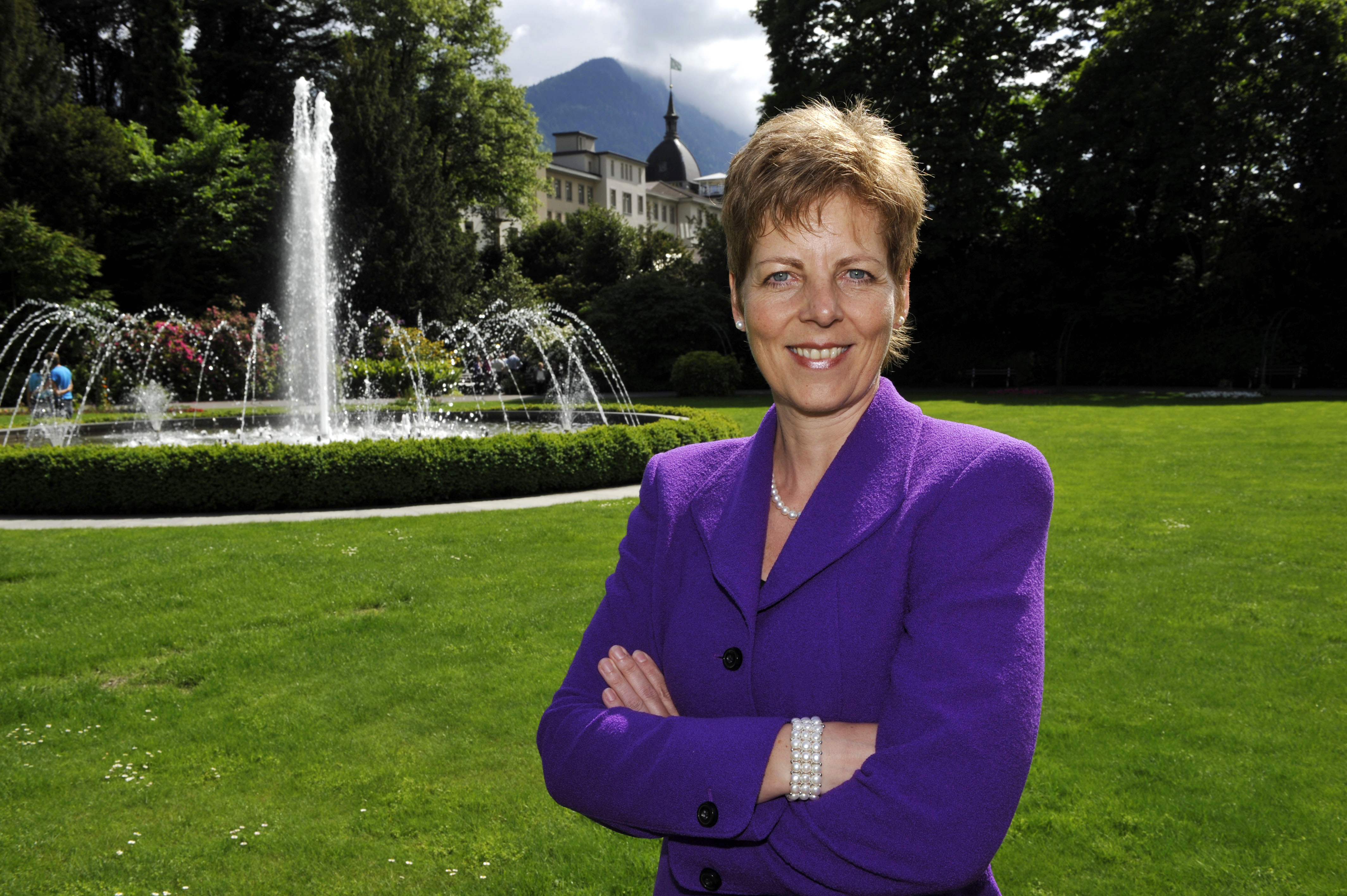Women return to the streets for equal rights

Thousands of women all over Switzerland demonstrated on Tuesday for greater equality, with the focus on equal pay for equal work.
Even today, 30 years after the principle of equality of men and women was enshrined in the constitution, women earn on average 20 per cent less than men with the same qualifications.
More than 50 organisations participated in this year’s day of action and some 100,000 women took part in events around the country, coordinator Lea Kusano told the Swiss News Agency.
The Unia trade union, which helped organise the day’s events, issued a press statement calling for equal pay to be implemented at last.
“Employers must make a systematic check of their wages, and adjust those of women,” it said. “And it is shocking that women often have to accept more insecure working conditions than men.”
Tuesday’s action marked the 20th anniversary of a nationwide women’s strike that attracted half a million participants and is still seen as a key moment in the history of the Swiss women’s movement.
Unia says that the event was well supported with women in many companies holding meetings to discuss the issue. In Geneva women held picnics – a popular activity in the original strike – outside a shopping centre and outside the cantonal hospital, demanding better conditions for women.
There was also a demonstration outside Geneva’s main station calling for Switzerland to ratify the international convention on the rights of domestic workers.
Snail’s pace
A group of young people taking part in the demonstration in Bern had opted to pull a giant snail around all day, making the point that change was moving at a snail’s pace.
As snail puller Robin Zurbrügg told swissinfo.ch: “A big part of what we’re saying is that the laws may have changed so that men and women are equal, but society hasn’t really got it yet.
“Of course equal pay is a big part of it, but what we want is to get rid of the stereotypes and gender roles that everyone has to conform to.”
The planned highpoint of the day was a concert of whistling at precisely 2.06pm, a time not chosen at random: written as 14:06 it’s another way of writing June 14, the date of the first protest.
However the turnout was in the hundreds rather than the thousands for this particular event. More women took to the streets towards evening. Police estimated a crowd of 2,000 in Zurich, 1,500 in Lausanne, 1,300 in Bern and 1,000 in Geneva.
Some demonstrators, like 69-year-old Ruth Begglinger, were reliving their participation in the protest of 20 years ago.
“I have come today out of solidarity – I don’t work any longer myself. I have come because so very little has changed in families, and above all in the private sector as far as equal rights is concerned,” Begglinger told swissinfo.ch in Bern.
“I am here to support the young women,” she added.
The issue of equal pay dominated question time in parliament and two female ministers appeared wearing lilac, the theme colour of the original 1991 protest.
Interior Minister Didier Burkhalter said there was a disappointing lack of interest on the part of employers to end pay discrimination, referring to social partnership talks aimed at tackling the problem which were launched in 2009.
Changing attitudes
There are historic reasons for the salary gap: for many years a wife’s salary was regarded simply as a supplement to her husband’s, Sylvie Durrer, director of the Federal Gender Equality Office, told French-language Swiss public radio on Tuesday.
But some things are changing. “There is no longer anyone who is not aware of the wage disparity,” she said. But although many enterprises say they want to redress the balance, they are afraid of opening a “Pandora’s box”.
Many businesses have a salary policy that is not really “coherent” and need to improve their overall approach, she explained. But she added that the principle of equality was now generally recognised.
“Businesses realise that at a certain level it is in their interest to promote equality. Studies have been made – in particular one by McKinsey – which show that having men and women working together equally is good not only for the atmosphere at work, but also for productivity. So I think this is now accepted – which is good for woman and for men too.”
Engineering fair pay
While pay disparities along gender lines are often successfully hidden, blantant examples do sometimes become public, such as one case cited in the Berner Zeitung newspaper.
Systems engineer Emilia Giammaria told the paper of her experience with a telecommunications firm in Bern. She became suspicious when a change of boss suddenly led to a 12 per cent rise in her pay.
On asking around among her male colleagues whether they thought her salary was fair, she found that one of them who was younger than she was and had only been with the company for two years, was getting 18 per cent more. The firm agreed to raise hers in stages. Thanks to her initiative, she ended up with 41 per cent more than her starting salary.
But the story didn’t end there. As she tells it, she spoke up in employees meetings about what she saw as a deterioration in the conditions for leave to look after sick children. And received a warning.
Shortly after the end of her maternity leave for the birth of her second child she was told she was being sacked because her work was “unsatisfactory” – something that had never been mentioned before. With the backing of her trade union, she was able to get compensation, which the union representative saw as “an admission of guilt”.
Although she lost her job, Giammaria has no regrets. “The fact that I was able to make my point and be proved right is empowering,” she told the newspaper.
Women earn on average 20% less than men in Switzerland. Around 40% of this differences comes from discrimination, says the Federal Gender Equality Office.
Women executives earn up to 30% less than men. The working world is still quite divided between “men’s” and lesser-paid “women’s” professions, it adds.
Six out of ten women in employment work part-time. Among men this figure is one in eight, or 12%.
Women are poorly represented at management level. Only 3% of managers and 4% of directors of Swiss listed companies are women.
Switzerland is not alone. A study by consultants Mercer, also released on March 3, showed that two thirds of European firms surveyed had no strategy for promoting women in top positions. Only 11% planned such initiatives.

In compliance with the JTI standards
More: SWI swissinfo.ch certified by the Journalism Trust Initiative















You can find an overview of ongoing debates with our journalists here . Please join us!
If you want to start a conversation about a topic raised in this article or want to report factual errors, email us at english@swissinfo.ch.